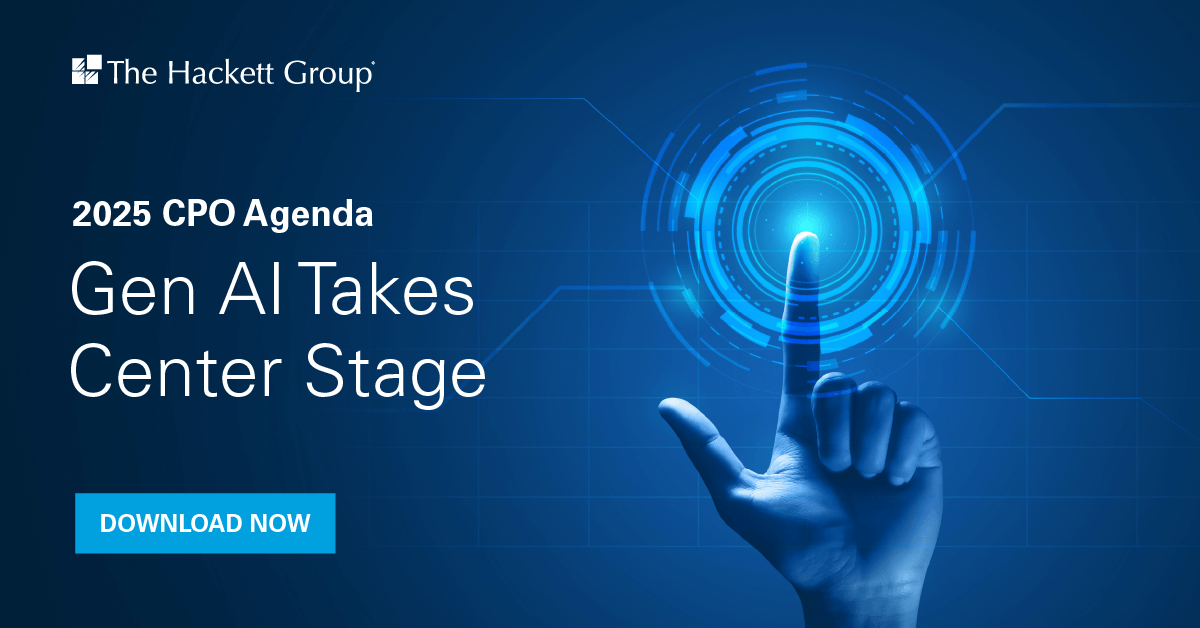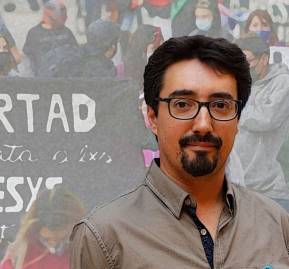otacilio
@otacilio
Let's look at alternatives:
- Modify the query.
- Start a new thread.
- Remove sources (if manually added).

Future trends in AI-driven procurement highlight significant advancements in operational efficiency and risk management. Organizations increasingly integrate generative AI to automate tasks such as spend analytics, contract management, and supplier evaluation, yielding average cost reductions of around 20% and boosting procurement process efficiency by 30%[2][4]. Additionally, AI supports proactive risk management by analyzing market trends and supplier behavior, allowing for informed decision-making and improved resilience against disruptions[4][3].
As AI capabilities expand, procurement leaders must focus on workforce reskilling and ethical deployment of AI technologies[1][6]. The shift toward automated, data-driven decision-making positions AI as a pivotal force in shaping efficient, strategic procurement operations[3][4].
Let's look at alternatives:
- Modify the query.
- Start a new thread.
- Remove sources (if manually added).
Get more accurate answers with Super Pandi, upload files, personalised discovery feed, save searches and contribute to the PandiPedia.
Dan Yamins
Professor que define diversos conceitos sobre inteligência artificial centrada no humano, focando em seu impacto e aplicações éticas na sociedade[1].
Melissa Valentine
Professora que discute como tecnologias de inteligência artificial devem colaborar com as capacidades humanas, em vez de simplesmente substituir o trabalho humano[1].
José Ignacio Lattore
Físico que discute a programação da ética nas máquinas e a possibilidade de a inteligência artificial participar em decisões normativas[5].
Clemens Stachl
Diretor de pesquisa que desenvolveu modelos de IA para prever o comportamento humano, aplicável em diferentes contextos como educação e mercado[3].

Alan Turing
Matemático que fundamentou a inteligência artificial e introduziu o conceito do 'Teste de Turing', analisando comportamento humano e de máquinas[4].
John McCarthy
Criador do termo 'inteligência artificial', McCarthy sempre defendeu que a máquina interaja com os humanos, como um aspecto fundamental da IA[4].
Max Tegmark
Professor que discute o impacto da IA na sociedade atual e futura, focando na relação entre humanos e tecnologias avançadas[6].
Peter Norvig
Coautor de um dos principais livros sobre IA, enfatizando desenvolvimento histórico e aplicação da inteligência artificial em diversas áreas[6].
Let's look at alternatives:
- Modify the query.
- Start a new thread.
- Remove sources (if manually added).

The Resource-Based View (RBV) is a strategic management framework that emphasizes the significance of a firm's internal resources and capabilities in achieving competitive advantage and superior performance[18][7][8][30][32]. Instead of focusing on external factors, RBV posits that a company's unique assets and capabilities are the key to long-term success[7]. It is an approach to achieving competitive advantage that emerged in the 1980s and 1990s[2]. RBV is considered an inside-out approach when analyzing a firm, meaning the analysis starts with the internal environment of the organization[6].
Here's a more detailed breakdown:
* Focus on Internal Resources: RBV proposes that internal strategic factors play a more critical role than external ones in developing a firm’s competitive advantage[8]. It emphasizes leveraging a firm’s resources, including assets, capabilities, and competencies[3].
* Resources and Capabilities: In RBT, resources refer to assets, business processes, capabilities, firm attributes, knowledge, and information controlled by a company to implement strategies[1]. Company resources can be grouped into physical capital, human capital, and organizational capital[1]. Capabilities represent a subset of non-transferable company-specific resources that improve the productivity of obtaining other resources[1].
* Two Types of Resources In the RBV model, resources are given the major role in helping companies to achieve higher organizational performance[2]. There are two types of resources: tangible and intangible[2]. Tangible assets are physical things, such as land, buildings, machinery, equipment, and capital[2]. Intangible assets are everything else that has no physical presence but can still be owned by the company, such as brand reputation, trademarks, and intellectual property[2].
* Assumptions: The two critical assumptions of RBV are that resources must be heterogeneous and immobile[2][5][18]. Heterogeneous means that skills, capabilities, and other resources that organizations possess differ from one company to another[2]. Immobile means that resources are not mobile and do not move from company to company, at least in the short-run[2].
* VRIN/VRIO Framework: To achieve a sustained competitive advantage, resources should be valuable, rare, inimitable, and non-substitutable (VRIN)[2][6][18][30]. The VRIO framework is a variation of RBV that focuses on the four key attributes of resources: value, rarity, inimitability, and organization[4]. The VRIO model proposes the new criteria of the organizational embeddedness of a resource[1].
* Competitive Advantage: RBV holds that sustained competitive advantage can be achieved more easily by exploiting internal rather than external factors as compared to industrial organization (I/O) view[2]. A firm is said to have a competitive advantage when it implements a value-creating strategy not simultaneously being implemented by any current or potential competitors[5].
* Criticisms: The traditional RBT is limited when explaining how some organizations gain a competitive advantage in an unpredictable and rapidly changing business environment[1]. The value creation idea that has been proposed based on this theory regarding valuable resources is tautological and static[1].
* Application: Beyond being used in strategic management, RBT has been adopted and applied in other business management areas, both in a qualitative and quantitative manner[1]. To date, the application of RBT has been extended to various business studies such as marketing, operational management, economics, supply chain management, information systems, and entrepreneurship[1].
RBV is a useful framework for analyzing an organization's internal and external environment and identifying its strengths and weaknesses[5][6]. By focusing on internal resources and applying frameworks like VRIO, companies can develop unique capabilities and strategies for sustained competitive advantage[4][7][30][32]. However, it's important to also consider external factors and adapt to changing market conditions[3][7][30].
Let's look at alternatives:
- Modify the query.
- Start a new thread.
- Remove sources (if manually added).

The study by Samarasinghe and Lokuge (2022) contributes to the field of data-driven innovation by identifying key areas for future research. They emphasize the need for a deeper understanding of how data can be used to drive innovation across various sectors, highlighting the importance of interdisciplinary approaches in this context.
Furthermore, the authors outline potential research directions that can guide scholars and practitioners in exploring the implications of data-driven practices. Their work serves as a foundational resource for those looking to enhance the practical application of data in fostering innovation processes, suggesting avenues for further investigation into the interplay between data utilization and innovation outcomes[1].
Let's look at alternatives:
- Modify the query.
- Start a new thread.
- Remove sources (if manually added).
The study by Wessel et al. (2020) contributes to the understanding of digital transformation by distinguishing it from IT-enabled organizational transformation. They integrate literature from organization science and information systems with longitudinal case studies to develop a conceptualization that highlights two key differences: first, digital transformation activities leverage digital technology to (re)define an organization’s value proposition, while IT-enabled transformation supports the existing value proposition.
Second, digital transformation leads to the emergence of a new organizational identity, whereas IT-enabled transformation enhances an existing identity. The authors synthesize these differences into a process model, providing a framework for understanding various types of transformations and suggesting avenues for future research[1].
Let's look at alternatives:
- Modify the query.
- Start a new thread.
- Remove sources (if manually added).
Get more accurate answers with Super Pandi, upload files, personalised discovery feed, save searches and contribute to the PandiPedia.

The study by Demir (2019) reviews the integration of digital technologies in organizations and their impact on employment trends. It identifies major technological trends influencing organizational behavior and highlights the transformation of professional skills needed in various industries. The findings suggest that digitalization is significantly reshaping national economies and industrial practices, ultimately impacting organizational structures and employment dynamics globally[2][3].
Moreover, the research emphasizes the necessity for organizations to adapt to these changes by developing relevant digital skills among employees to maintain competitiveness in the market. The study provides valuable insights into how these developments can enhance human resource management and organizational effectiveness[1][4].
Let's look at alternatives:
- Modify the query.
- Start a new thread.
- Remove sources (if manually added).
- 1(current)













